Optical properties of materials and their applications Second Edition Singh
Visit to download the full and correct content document: https://ebookmass.com/product/optical-properties-of-materials-and-their-applicationssecond-edition-singh/
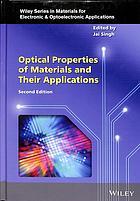
More products digital (pdf, epub, mobi) instant download maybe you interests ...

Optical Materials and Applications: Volume 1 Novel
Optical Materials Francesco Simoni
https://ebookmass.com/product/optical-materials-and-applicationsvolume-1-novel-optical-materials-francesco-simoni/
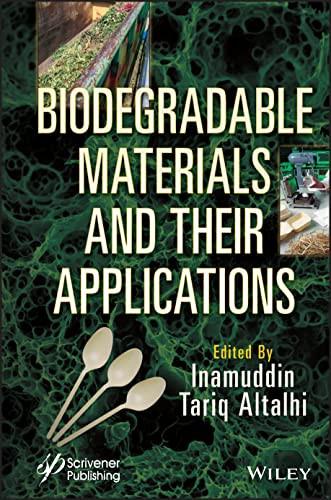
Biodegradable Materials and Their Applications
Inamuddin https://ebookmass.com/product/biodegradable-materials-and-theirapplications-inamuddin/
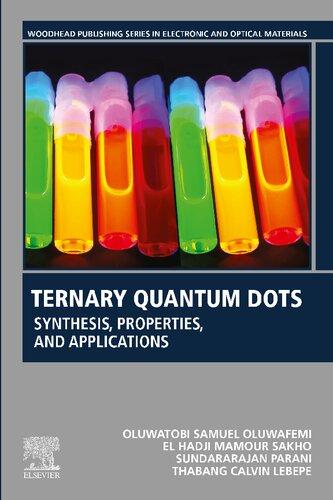
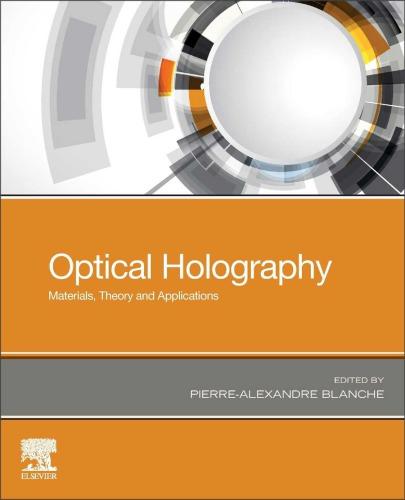
Ternary Quantum Dots: Synthesis, Properties, and Applications (Woodhead Publishing Series in Electronic and Optical Materials) 1st Edition Oluwatobi Samuel Oluwafemi
https://ebookmass.com/product/ternary-quantum-dots-synthesisproperties-and-applications-woodhead-publishing-series-inelectronic-and-optical-materials-1st-edition-oluwatobi-samueloluwafemi/
Optical Holography: Materials, Theory and Applications
Pierre-Alexandre Blanche
https://ebookmass.com/product/optical-holography-materialstheory-and-applications-pierre-alexandre-blanche/

Optical Thin Films and Coatings 2e : From Materials to Applications. 2nd ed. Edition Flory
https://ebookmass.com/product/optical-thin-films-andcoatings-2e-from-materials-to-applications-2nd-ed-edition-flory/

Electrical Properties of Materials 10th Edition Solymar
https://ebookmass.com/product/electrical-properties-ofmaterials-10th-edition-solymar/
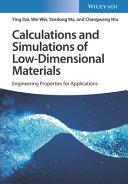
Calculations and Simulations of Low-Dimensional Materials : Tailoring Properties for Applications 1st Edition Ying Dai
https://ebookmass.com/product/calculations-and-simulations-oflow-dimensional-materials-tailoring-properties-forapplications-1st-edition-ying-dai/
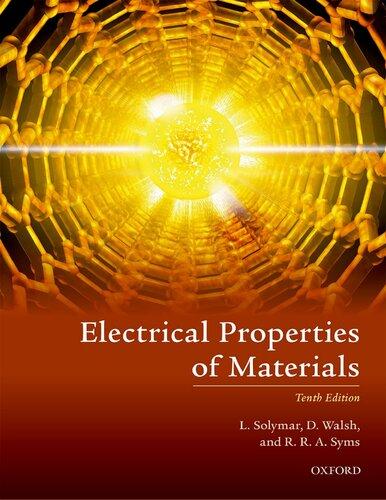
Electrical Properties of Materials (10th Edition) L. Solymar
https://ebookmass.com/product/electrical-properties-ofmaterials-10th-edition-l-solymar/

Nonconventional and Vernacular Construction Materials■
Characterisation, Properties and Applications Kent A. Harries & Bhavna Sharma
https://ebookmass.com/product/nonconventional-and-vernacularconstruction-materials%ef%bc%9a-characterisation-properties-andapplications-kent-a-harries-bhavna-sharma/
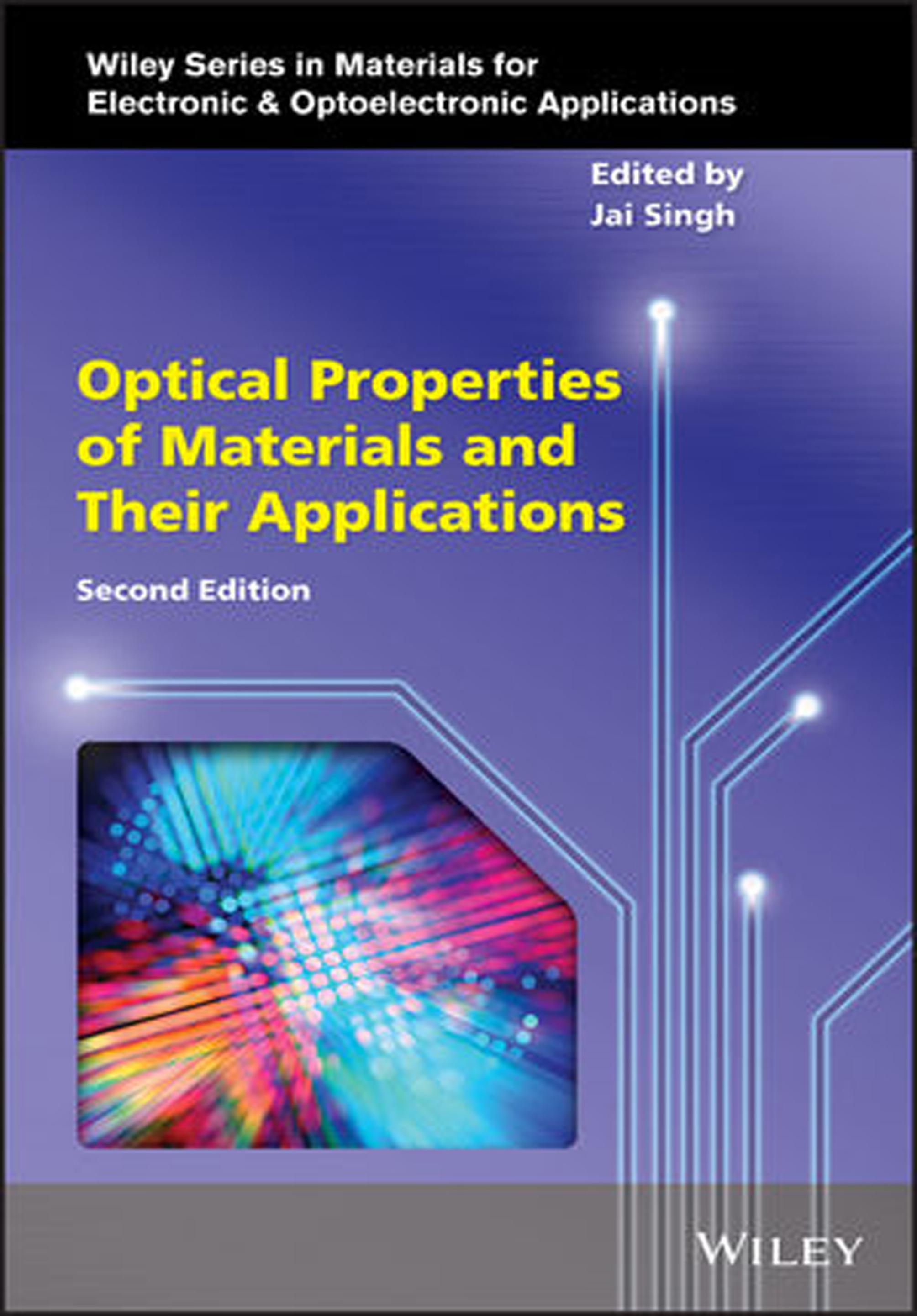
OpticalPropertiesofMaterialsandTheirApplications
WileySeriesinMaterialsforElectronicand OptoelectronicApplications
www.wiley.com/go/meoa
SeriesEditors
ProfessorArthurWilloughby, UniversityofSouthampton,Southampton,UK
DrPeterCapper, Ex-LeonardoMWLtd,Southampton,UK
ProfessorSofaKasap, UniversityofSaskatchewan,Saskatoon,Canada
PublishedTitles
BulkCrystalGrowthofElectronic,OpticalandOptoelectronicMaterials,EditedbyP.Capper PropertiesofGroup-IV,III—VandII—VISemiconductors,S.Adachi ChargeTransportinDisorderedSolidswithApplicationsinElectronics,EditedbyS.Baranovski OpticalPropertiesofCondensedMatterandApplications,EditedbyJ.Singh ThinFilmSolarCells:Fabrication,Characterization,andApplications,EditedbyJ.PoortmansandV. Arkhipov
DielectricFilmsforAdvancedMicroelectronics,EditedbyM.R.Baklanov,M.Green,andK.Maex LiquidPhaseEpitaxyofElectronic,OpticalandOptoelectronicMaterials,EditedbyP.CapperandM.Mauk MolecularElectronics:FromPrinciplestoPractice,M.Petty LuminescentMaterialsandApplications,A.Kitai CVDDiamondforElectronicDevicesandSensors,EditedbyR.S.Sussmann PropertiesofSemiconductorAlloys:Group-IV,III—VandII—VISemiconductors,S.Adachi MercuryCadmiumTelluride,EditedbyP.CapperandJ.Garland ZincOxideMaterialsforElectronicandOptoelectronicDeviceApplications,EditedbyC.Litton,D.C. Reynolds,andT.C.Collins
Lead-FreeSolders:MaterialsReliabilityforElectronics,EditedbyK.N.Subramunian SiliconPhotonics:FundamentalsandDevices,M.JamalDeenandP.K.Basu NanostructuredandSubwavelengthWaveguides:FundamentalsandApplications,M.Skorobogatiy PhotovoltaicMaterials:FromCrystallineSilicontoThird-GenerationApproaches,EditedbyG.Conibeer andA.Willoughby GlancingAngleDepositionofThinFilms:EngineeringtheNanoscale,MatthewM.Hawkeye,MichaelT. Taschuk,andMichaelJ.Brett
PhysicalPropertiesofHigh-TemperatureSuperconductors,R.Wesche SpintronicsforNextGenerationInnovativeDevices,EditedbyKatsuakiSatoandEijiSaitoh InorganicGlassesforPhotonics:Fundamentals,EngineeringandApplications,AnimeshJha AmorphousSemiconductors:Structural,OpticalandElectronicProperties,KazuoMorigaki,SandorKugler, andKoichiShimakawa
MicrowaveMaterialsandApplications,Twovolumeset,EditedbyMailadilT.Sebastian,RickUbic,andHeli Jantunen
MolecularBeamEpitaxy:MaterialsandApplicationsforElectronicsandOptoelectronics,EditedbyHajime AsahiandYoshijiKorikoshi
MetalorganicVaporPhaseEpitaxy(MOVPE):Growth,MaterialsProperties,andApplications,Editedby StuartIrvineandPeterCapper
OpticalPropertiesofMaterialsandTheir Applications
Editedby JaiSingh
CollegeofEngineering,ITandEnvironment
CharlesDarwinUniversity,Darwin,Australia
SecondEdition
Thiseditionfirstpublished2020
©2020JohnWiley&SonsLtd
EditionHistory
JohnWiley&SonsInc.(1e,2006)
Allrightsreserved.Nopartofthispublicationmaybereproduced,storedinaretrievalsystem,ortransmitted,in anyformorbyanymeans,electronic,mechanical,photocopying,recordingorotherwise,exceptaspermittedby law.Adviceonhowtoobtainpermissiontoreusematerialfromthistitleisavailableathttp://www.wiley.com/go/ permissions.
TherightofJaiSinghtobeidentifiedastheauthoroftheeditorialmaterialinthisworkhasbeenassertedin accordancewithlaw.
RegisteredOffices
JohnWiley&Sons,Inc.,111RiverStreet,Hoboken,NJ07030,USA
JohnWiley&SonsLtd,TheAtrium,SouthernGate,Chichester,WestSussex,PO198SQ,UK
EditorialOffice
TheAtrium,SouthernGate,Chichester,WestSussex,PO198SQ,UK
Fordetailsofourglobaleditorialoffices,customerservices,andmoreinformationaboutWileyproductsvisitusat www.wiley.com.
Wileyalsopublishesitsbooksinavarietyofelectronicformatsandbyprint-on-demand.Somecontentthat appearsinstandardprintversionsofthisbookmaynotbeavailableinotherformats.
LimitofLiability/DisclaimerofWarranty
Inviewofongoingresearch,equipmentmodifications,changesingovernmentalregulations,andtheconstantflow ofinformationrelatingtotheuseofexperimentalreagents,equipment,anddevices,thereaderisurgedtoreview andevaluatetheinformationprovidedinthepackageinsertorinstructionsforeachchemical,pieceofequipment, reagent,ordevicefor,amongotherthings,anychangesintheinstructionsorindicationofusageandforadded warningsandprecautions.Whilethepublisherandauthorshaveusedtheirbesteffortsinpreparingthiswork,they makenorepresentationsorwarrantieswithrespecttotheaccuracyorcompletenessofthecontentsofthiswork andspecificallydisclaimallwarranties,includingwithoutlimitationanyimpliedwarrantiesofmerchantabilityor fitnessforaparticularpurpose.Nowarrantymaybecreatedorextendedbysalesrepresentatives,writtensales materialsorpromotionalstatementsforthiswork.Thefactthatanorganization,website,orproductisreferredto inthisworkasacitationand/orpotentialsourceoffurtherinformationdoesnotmeanthatthepublisherand authorsendorsetheinformationorservicestheorganization,website,orproductmayprovideorrecommendations itmaymake.Thisworkissoldwiththeunderstandingthatthepublisherisnotengagedinrenderingprofessional services.Theadviceandstrategiescontainedhereinmaynotbesuitableforyoursituation.Youshouldconsultwith aspecialistwhereappropriate.Further,readersshouldbeawarethatwebsiteslistedinthisworkmayhavechanged ordisappearedbetweenwhenthisworkwaswrittenandwhenitisread.Neitherthepublishernorauthorsshallbe liableforanylossofprofitoranyothercommercialdamages,includingbutnotlimitedtospecial,incidental, consequential,orotherdamages.
LibraryofCongressCataloging-in-PublicationData
Names:Singh,Jai,editor.
Title:Opticalpropertiesofmaterialsandtheirapplications/editedby JaiSingh(CollegeofEngineering,IT,andEnvironment,CharlesDarwin University,Darwin,Australia)
Othertitles:Opticalpropertiesofcondensedmatterandapplications.| Opticalpropertiesofcondensedmatterandapplications.
Description:Secondedition.|Hoboken,NJ:JohnWiley&Sons,2020.| Series:Wileyseriesinmaterialsforelectronicandoptoelectronic applications|Previousedition:Opticalpropertiesofcondensedmatter andapplications,2006.|Includesbibliographicalreferencesandindex. Identifiers:LCCN2019023895(print)|LCCN2019023896(ebook)|ISBN 9781119506317(cloth)|ISBN9781119506065(adobepdf)|ISBN 9781119506058(epub)
Subjects:LCSH:Condensedmatter–Opticalproperties.|Materials–Optical properties.|Electrooptics–Materials.
Classification:LCCQC173.458.O66O682020(print)|LCCQC173.458.O66 (ebook)|DDC530.4/12–dc23
LCrecordavailableathttps://lccn.loc.gov/2019023895
LCebookrecordavailableathttps://lccn.loc.gov/2019023896
CoverDesign:Wiley
CoverImages:©mitchFOTO/Shutterstock Setin10/12ptWarnockProbySPiGlobal,Chennai,India
10987654321
Contents
ListofContributors xv
SeriesPreface xvii
Preface xix
1FundamentalOpticalPropertiesofMaterialsI1
S.O.Kasap,W.C.Tan,JaiSingh,andAsimK.Ray
1.1Introduction1
1.2OpticalConstants n and K 2
1.2.1RefractiveIndexandExtinctionCoefficient2
1.2.2 n and K ,andKramers–KronigRelations5
1.3RefractiveIndexandDispersion7
1.3.1CauchyDispersionRelation7
1.3.2SellmeierEquation8
1.3.3RefractiveIndexofSemiconductors10
1.3.3.1RefractiveIndexofCrystallineSemiconductors10
1.3.3.2BandgapandTemperatureDependence11
1.3.4RefractiveIndexofGlasses11
1.3.5Wemple–DiDomenicoDispersionRelation14
1.3.6GroupIndex15
1.4TheSwanepoelTechnique:Measurementof n and �� forThinFilms onSubstrates16
1.4.1UniformThicknessFilms16
1.4.2ThinFilmswithNon-uniformThickness22
1.5TransmittanceandReflectanceofaPartiallyTransparentPlate25
1.6OpticalPropertiesandDiffuseReflection:Schuster–Kubelka–Munk Theory27
1.7Conclusions31 Acknowledgments31 References32
2FundamentalOpticalPropertiesofMaterialsII37
S.O.Kasap,K.Koughia,JaiSingh,HarryE.Ruda,andAsimK.Ray 2.1Introduction37
2.2LatticeorReststrahlenAbsorptionandInfraredReflection40 2.3FreeCarrierAbsorption(FCA)42
2.4Band-to-BandorFundamentalAbsorption(CrystallineSolids)45
2.5ImpurityAbsorptionandRare-EarthIons48
2.6EffectofExternalFields54
2.6.1Electro-OpticEffects54
2.6.2Electro-AbsorptionandFranz–KeldyshEffect55
2.6.3FaradayEffect56
2.7EffectiveMediumApproximations58 2.8Conclusions61 Acknowledgments61 References62
3OpticalPropertiesofDisorderedCondensedMatter67 KoichiShimakawa,JaiSingh,andS.K.O’Leary
3.1Introduction67
3.2FundamentalOpticalAbsorption(Experimental)69
3.2.1AmorphousChalcogenides69
3.2.2HydrogenatedNano-CrystallineSilicon(nc-Si:H)72
3.3AbsorptionCoefficient(Theory)74
3.4CompositionalVariationoftheOpticalBandgap79
3.4.1InAmorphousChalcogenides79 3.5Conclusions80 References80
4OpticalPropertiesofGlasses83 AndrewEdgar
4.1Introduction83
4.2TheRefractiveIndex84 4.3GlassInterfaces86 4.4Dispersion88
4.5SensitivityoftheRefractiveIndex90
4.5.1TemperatureDependence90
4.5.2StressDependence91
4.5.3MagneticFieldDependence—TheFaradayEffect92
4.5.4ChemicalPerturbations—MolarRefractivity94 4.6GlassColor95
4.6.1ColorationbyColloidalMetalsandSemiconductors95
4.6.2OpticalAbsorptioninRare-Earth-DopedGlass96
4.6.3Absorptionby3dMetalIons99
4.7FluorescenceinRare-Earth-DopedGlass102
4.8GlassesforFiberOptics104
4.9RefractiveIndexEngineering106
4.10GlassandGlass–FiberLasersandAmplifiers109
4.11ValenceChangeGlasses111
4.12TransparentGlassCeramics114
4.12.1Introduction114
4.12.2TheoreticalBasisforTransparency116
4.12.3Rare-Earth-DopedTransparentGlassCeramicsforActive Photonics120
4.12.4FerroelectricTransparentGlassCeramics121
4.12.5TransparentGlassCeramicsforX-rayStoragePhosphors121
4.13Conclusions124 References124
5ConceptofExcitons129
JaiSingh,HarryE.Ruda,M.R.Narayan,andD.Ompong
5.1Introduction129
5.2ExcitonsinCrystallineSolids130
5.2.1ExcitonicAbsorptioninCrystallineSolids133
5.3ExcitonsinAmorphousSemiconductors135
5.3.1ExcitonicAbsorptioninAmorphousSolids137
5.4ExcitonsinOrganicSemiconductors139
5.4.1PhotoexcitationandFormationofExcitons140
5.4.1.1PhotoexcitationofSingletExcitonsDueto Exciton–PhotonInteraction141
5.4.1.2ExcitationofTripletExcitons142
5.4.2ExcitonUp-Conversion147
5.4.3ExcitonDissociation148
5.4.3.1ConversionfromFrenkeltoCTExcitons151
5.4.3.2DissociationofCTExcitons152
5.5Conclusions153 References154
6Photoluminescence157
TakeshiAoki
6.1Introduction157
6.2FundamentalAspectsofPhotoluminescence(PL)inMaterials158
6.2.1IntrinsicPhotoluminescence159
6.2.2ExtrinsicPhotoluminescence160
6.2.3Up-ConversionPhotoluminescence(UCPL)162
6.2.4OtherRelatedOpticalTransitions163
6.3ExperimentalAspects164
6.3.1StaticPLSpectroscopy164
6.3.2PhotoluminescenceExcitationSpectroscopy(PLE)and PhotoluminescenceAbsorptionSpectroscopy(PLAS)167
6.3.3TimeResolvedSpectroscopy(TRS)168
6.3.4Time-CorrelatedSinglePhotonCounting(TCSPC)171
6.3.5Frequency-ResolvedSpectroscopy(FRS)172
6.3.6QuadratureFrequencyResolvedSpectroscopy(QFRS)173
6.4PhotoluminescenceLifetimeSpectroscopyofAmorphous SemiconductorsbyQFRSTechnique175
6.4.1Overview175
6.4.2Dual-PhaseDoubleLock-in(DPDL)QFRSTechnique176
6.4.3ExploringBroadPLLifetimeDistributionina-Si:Hby WidebandQFRS178
6.4.3.1EffectsofExcitationIntensity,Excitation,and EmissionEnergies179
6.4.3.2TemperatureDependence184
6.4.3.3EffectofElectricandMagneticFields185
6.4.4ResidualPLDecayofa-Si:H189
6.5QFRSonUp-ConversionPhotoluminescence(UCPL)ofRE-Doped Materials192
6.6Conclusions197 Acknowledgments198 References198
7Photoluminescence,PhotoinducedChanges,andElectroluminescencein NoncrystallineSemiconductors203 JaiSingh 7.1Introduction203
7.2Photoluminescence205
7.2.1RadiativeRecombinationOperatorandTransitionMatrix Element206
7.2.2RatesofSpontaneousEmission211
7.2.2.1AtNonthermalEquilibrium212
7.2.2.2AtThermalEquilibrium214
7.2.2.3Determining E 0 215
7.2.3ResultsofSpontaneousEmissionandRadiativeLifetime216
7.2.4TemperatureDependenceofPL222
7.2.5ExcitonicConcept223
7.3PhotoinducedChangesinAmorphousChalcogenides225
7.3.1EffectofPhoto-ExcitationandPhononInteraction226
7.3.2ExcitationofaSingleElectron–HolePair228
7.3.3PairingofLikeExcitedChargeCarriers229
7.4RadiativeRecombinationofExcitonsinOrganicSemiconductors232
7.4.1RateofFluorescence233
7.4.2RateofPhosphorescence233
7.4.3OrganicLightEmittingDiodes(OLEDs)234
7.4.3.1Second-andThird-GenerationOLEDs:TADF235
7.5Conclusions236 Acknowledgments236 References237
8PhotoinducedBondBreakingandVolumeChangeinChalcogenideGlasses241 SandorKugler,RozáliaLukács,andKoichiShimakawa
8.1Introduction241
8.2Atomic-ScaleComputerSimulationsofPhotoinducedVolume Changes243
8.3EffectofIllumination244
8.4KineticsofVolumeChange245
8.4.1a-Se245
8.4.2a-As2 Se3 246
8.5AdditionalRemarks248 8.6Conclusions249 References249
9PropertiesandApplicationsofPhotonicCrystals251 HarryE.RudaandNaomiMatsuura
9.1Introduction251
9.2PCOverview252
9.2.1IntroductiontoPCs252
9.2.2NanoengineeringofPCArchitectures253
9.2.3MaterialsSelectionforPCs255
9.3TunablePCs255
9.3.1TuningPCResponsebyChangingtheRefractiveIndexof ConstituentMaterials256
9.3.1.1PCRefractiveIndexTuningUsingLight256
9.3.1.2PCRefractiveIndexTuningUsinganApplied ElectricField256
9.3.1.3RefractiveIndexTuningofInfiltratedPCs257
9.3.1.4PCRefractiveIndexTuningbyAlteringthe ConcentrationofFreeCarriers(UsingElectric FieldorTemperature)inSemiconductor-BasedPCs257
9.3.2TuningPCResponsebyAlteringthePhysicalStructure ofthePC258
9.3.2.1TuningPCResponseUsingTemperature258
9.3.2.2TuningPCResponseUsingMagnetism258
9.3.2.3TuningPCResponseUsingStrain258
9.3.2.4TuningPCResponseUsingPiezoelectricEffects259
9.3.2.5TuningPCResponseUsingMEMSActuation260
9.4SelectedApplicationsofPC260
9.4.1WaveguideDevices261
9.4.2DispersiveDevices262
9.4.3Add/DropMultiplexingDevices262
9.4.4ApplicationsofPCsforLight-EmittingDiodes(LEDs)and Lasers263
9.5Conclusions265 Acknowledgments265 References265
10NonlinearOpticalPropertiesofPhotonicGlasses269 KeijiTanaka
10.1Introduction269 10.2PhotonicGlass271
10.3NonlinearAbsorptionandRefractivity272
10.3.1Fundamentals272
10.3.2Two-PhotonAbsorption275
x Contents
10.3.3NonlinearRefractivity278 10.4NonlinearExcitation-InducedStructuralChanges280 10.4.1Fundamentals280 10.4.2Oxides281
10.4.3Chalcogenides283 10.5Conclusions285
10.AAddendum:PerspectivesonOpticalDevices286 References288
11OpticalPropertiesofOrganicSemiconductors295
TakashiKobayashiandHiroyoshiNaito 11.1Introduction295
11.2MolecularStructureof π-ConjugatedPolymers296 11.3TheoreticalModels298
11.4AbsorptionSpectrum300 11.5Photoluminescence304 11.6Non-EmissiveExcitedStates306
11.7Electron–ElectronInteraction309 11.8InterchainInteraction314 11.9Conclusions320 References321
12OrganicSemiconductorsandApplications323 FurongZhu
12.1Introduction323
12.1.1DeviceArchitectureandOperationPrinciple324
12.1.2TechnicalChallengesandProcessIntegration325
12.2AnodeModificationforEnhancedOLEDPerformance327
12.2.1Low-TemperatureHigh-PerformanceITO327
12.2.1.1ExperimentalMethods328
12.2.1.2MorphologicalProperties329
12.2.1.3ElectricalProperties331
12.2.1.4OpticalProperties333
12.2.1.5CompositionalAnalysis336
12.2.2AnodeModification339
12.2.3ElectroluminescencePerformanceofOLEDs340
12.3FlexibleOLEDs345
12.3.1FlexibleOLEDsonUltrathinGlassSubstrate346
12.3.2FlexibleTop-EmittingOLEDsonPlasticFoils347
12.3.2.1Top-EmittingOLEDs348
12.3.2.2FlexibleTOLEDsonPlasticFoils350
12.4Solution-ProcessableHigh-PerformingOLEDs353
12.4.1PerformanceofOLEDswithaHybridMoO3 -PEDOT:PSS HoleInjectionLayer(HIL)353
12.4.2MorphologicalPropertiesoftheMoO3 -PEDOT:PSSHIL361
12.4.3SurfaceElectronicPropertiesofMoO3 -PEDOT:PSSHIL363 12.5Conclusions368 References369
13TransparentWhiteOLEDs373 ChoiWingHongandFurongZhu
13.1Introduction—ProgressinTransparentWOLEDs373 13.2PerformanceofWOLEDs374
13.2.1OptimizationofDichromaticWOLEDs374
13.2.2 J -L-V CharacteristicsofWOLEDs377
13.2.3Electron-HoleCurrentBalanceinTransparentWOLEDs384
13.3EmissionBehaviorofTransparentWOLEDs386
13.3.1Visible-LightTransparencyofWOLEDs386
13.3.2 L-J CharacteristicsofTransparentWOLEDs390
13.3.3Angular-DependentColorStabilityofTransparentWOLEDs395 13.4Conclusions400 References400
14OpticalPropertiesofThinFilms403
V.-V.Truong,S.Tanemura,A.Haché,andL.Miao
14.1Introduction403 14.2OpticsofThinFilms404
14.2.1AnIsotropicFilmonaSubstrate404
14.2.2MatrixMethodsforMulti-LayeredStructures406
14.2.3AnisotropicFilms407
14.3Reflection-TransmissionPhotoellipsometryforDeterminationof OpticalConstants408
14.3.1PhotoellipsometryofaThickoraThinFilm408
14.3.2PhotoellipsometryforaStackofThickandThinFilms410
14.3.3RemarksontheReflection-TransmissionPhotoellipsometry Method412
14.4ApplicationofThinFilmstoEnergyManagementand Renewable-EnergyTechnologies412
14.4.1ElectrochromicThinFilms413
14.4.2PureandMetal-DopedVO2 ThermochromicThinFilms414
14.4.3Temperature-StabilizedV1-x Wx O2 SkyRadiatorFilms417 14.4.4OpticalFunctionalTiO2 ThinFilmforEnvironmentally FriendlyTechnologies420
14.5ApplicationofTunableThinFilmstoPhaseandPolarization Modulation424 14.6Conclusions430 References430
15OpticalCharacterizationofMaterialsbySpectroscopicEllipsometry435 J.Mistrík 15.1Introduction435
15.2NotionsofLightPolarization436
15.3MeasureableQuantities438 15.4Instrumentation441
15.5SingleInterface442 15.6SingleLayer448 15.7Multilayer454
15.8LinearGrating458
15.9Conclusions462 Acknowledgments463 References463
16ExcitonicProcessesinQuantumWells465 JaiSinghandI.-K.Oh
16.1Introduction465
16.2Exciton–PhononInteraction466
16.3ExcitonFormationinQWsAssistedbyPhonons467 16.4NonradiativeRelaxationofFreeExcitons474
16.4.1IntrabandProcesses475
16.4.2InterbandProcesses479
16.5Quasi-2DFree-ExcitonLinewidth485 16.6LocalizationofFreeExcitons491 16.7Conclusions499 References500
17OptoelectronicPropertiesandApplicationsofQuantumDots503 JørnM.Hvam
17.1Introduction503
17.2EpitaxialGrowthandStructureofQuantumDots504
17.2.1Self-AssembledQuantumDots504
17.2.2Site-ControlledGrowthonPatternedSubstrates505
17.2.3NaturalorInterfaceQuantumDots506
17.2.4QuantumDotsinNanowires507
17.3ExcitonsinQuantumDots508
17.3.1Quantum-DotBandgap509
17.3.2OpticalTransitions510
17.4OpticalProperties513
17.4.1RadiativeLifetime,OscillatorStrength,andInternal QuantumEfficiency514
17.4.2Linewidth,Coherence,andDephasing516
17.4.3TransientFour-WaveMixing517
17.5QuantumDotApplications520
17.5.1QuantumDotLasersandOpticalAmplifiers520
17.5.1.1GainDynamics522
17.5.1.2HomogeneousBroadeningandDephasing524
17.5.1.3Long-WavelengthLasers526
17.5.1.4NanoLasers527
17.5.2Single-PhotonEmitters527
17.5.2.1MicropillarsandNanowires530
17.5.2.2PhotonicCrystalWaveguide531 17.6Conclusions533 Acknowledgments534 References534
18Perovskites–RevisitingtheVenerableABX3 FamilywithOrganic FlexibilityandNewApplications537 JunweiXu,D.L.Carroll,K.Biswas,F.Moretti,S.Gridin,andR.T.Williams 18.1Introduction537
18.1.1Review537
18.1.2TheStructures538 18.1.2.1SimpleCubicFrameworks538 18.1.2.2TheMultiplicityofHybrids539 18.1.2.3StructuralVariation540
18.2HybridPerovskitesinPhotovoltaics544 18.2.1Review544 18.2.2ThePhenomenaCharacterizedas“DefectTolerance”548 18.3Light-EmittingDiodesUsingSolution-ProcessedLeadHalide Perovskites549
18.3.1Review549 18.3.2ConstructionandCharacterizationofLEDsUtilizing CsPbBr3 Nano-InclusionsinCs4 PbBr6 asthe ElectroluminescentMedium553 18.4IonizingRadiationDetectorsUsingLeadHalidePerovskite Materials:Basics,Progress,andProspects562 18.5Conclusions582 Acknowledgments583 References583
19OpticalPropertiesandSpinDynamicsofDilutedMagneticSemiconductor Nanostructures589
AkihiroMurayamaandYasuoOka 19.1Introduction589 19.2QuantumWells591 19.2.1SpinInjection591 19.2.2StudyofSpinDynamicsbyPump-ProbeSpectroscopy594 19.3FabricationofNanostructuresbyElectron-BeamLithography596 19.4Self-AssembledQuantumDots599 19.5HybridNanostructureswithFerromagneticMaterials604 19.6Conclusions607 Acknowledgments608 References609
20KineticsofthePersistentPhotoconductivityinCrystallineIII-V Semiconductors611
RubenJeronimoFreitasandKoichiShimakawa
20.1Introduction611
20.2AReviewofPPCinIII-VSemiconductors613
20.3KeyPhysicalTermsRelatedtoPPC615
20.3.1DispersiveReaction615
20.3.2SEFandPowerLaw616
20.3.3WaitingTimeDistribution617
20.4KineticsofPPCinIII-VSemiconductors617
20.5Conclusions623 Acknowledgments623
20.AOntheReactionRateUndertheUniformDistribution623 References625 Index 627
ListofContributors
TakeshiAoki JointResearchCenterofHigh-technology,DepartmentofElectronicsand InformationTechnology,TokyoPolytechnicUniversity,Atsugi,Japan
K.Biswas DepartmentofChemistryandPhysics,ArkansasStateUniversity,Jonesboro, USA
D.L.Carroll DepartmentofPhysicsandNanotechnologyCenter,WakeForestUniversity, Winston-Salem,NorthCarolina,USA
AndrewEdgar SchoolofChemicalandPhysicalSciences,VictoriaUniversityof Wellington,NewZealand
RubenJeronimoFreitas DepartmentofElectricalandElectronicEngineering,National UniversityofTimorLorosae,Díli,EastTimor
S.Gridin DepartmentofPhysicsandNanotechnologyCenter,WakeForestUniversity, Winston-Salem,NorthCarolina,USA
A.Haché Départementdephysiqueetd’astronomie,UniversitédeMoncton,New Brunswick,Canada
JørnM.Hvam DepartmentofPhotonicsEngineering,TechnicalUniversityofDenmark, KongensLyngby,Denmark
S.O.Kasap DepartmentofElectricalandComputerEngineering,Universityof Saskatchewan,Saskatoon,Canada
TakashiKobayashi DepartmentofPhysicsandElectronics,OsakaPrefectureUniversity, Sakai,Japan
K.Koughia DepartmentofElectricalandComputerEngineering,Universityof Saskatchewan,Saskatoon,Canada
SandorKugler DepartmentofTheoreticalPhysics,BudapestUniversityofTechnology andEconomics,Hungary
RozáliaLukács NorwegianUniversityofLifeSciences,Ås,Akershus,Norway
NaomiMatsuura CentreforNanotechnology,UniversityofToronto,Canada
L.Miao GuilinUniversityofElectronicTechnology,Guangxi,P.R.China
xvi ListofContributors
J.Mistrík CenterofMaterialsandNanotechnologies,FacultyofChemicalTechnology, UniversityofPardubice,CzechRepublic
F.Moretti LawrenceBerkeleyNationalLaboratory,Berkeley,California,USA
AkihiroMurayama GraduateSchoolofInformationScienceandTechnology,Hokkaido University,Sapporo,Japan
HiroyoshiNaito TheResearchInstituteforMolecularElectronicDevices,Osaka PrefectureUniversity,Sakai,Japan
M.R.Narayan CollegeofEngineering,InformationTechnologyandEnvironment, CharlesDarwinUniversity,Darwin,Australia
S.K.O’Leary SchoolofEngineering,TheUniversityofBritishColumbia,Kelowna, Canada
I.-K.Oh CollegeofEngineering,InformationTechnologyandEnvironment,Charles DarwinUniversity,Darwin,Australia
YasuoOka InstituteofMultidisciplinaryResearchforAdvancedMaterials,Tohoku University,Sendai,Miyagi,Japan
D.Ompong CollegeofEngineering,InformationTechnologyandEnvironment,Charles DarwinUniversity,Darwin,Australia
AsimK.Ray DepartmentofElectrical&ComputerEngineering,BrunelUniversity London,Uxbridge,UK
HarryE.Ruda CentreforNanotechnologyandElectronicandPhotonicMaterialsGroup, DepartmentofMaterialsScience,UniversityofToronto,Ontario,Canada
KoichiShimakawa DepartmentofElectricalandElectronicEngineering,GifuUniversity, Japan
JaiSingh CollegeofEngineering,InformationTechnologyandEnvironment,Charles DarwinUniversity,Darwin,Australia
W.C.Tan DepartmentofElectrical&ComputerEngineering,NationalUniversityof Singapore,KentRidge,Singapore
KeijiTanaka DepartmentofAppliedPhysics,GraduateSchoolofEngineering,Hokkaido University,Sapporo,Japan
S.Tanemura JapanFineCeramicsCentre,Mutsuno,Atsuta-ku,Nagoya,Japan
V.-V.Truong PhysicsDepartment,ConcordiaUniversity,Montreal,Quebec,Canada
R.T.Williams DepartmentofPhysicsandNanotechnologyCenter,WakeForest University,Winston-Salem,NorthCarolina,USA
ChoiWingHong,DepartmentofPhysics,HongKongBaptistUniversity,KowloonTong, China
JunweiXu DepartmentofPhysicsandNanotechnologyCenter,WakeForestUniversity, Winston-Salem,NorthCarolina,USA
FurongZhu DepartmentofPhysics,HongKongBaptistUniversity,KowloonTong,China
SeriesPreface
WileySeriesinMaterialsforElectronicandOptoelectronic Applications
Thisbookseriesisdevotedtotherapidlydevelopingclassofmaterialsusedforelectronicandoptoelectronicapplications.Itisdesignedtoprovidemuch-neededinformationonthefundamentalscientificprinciplesofthesematerials,togetherwithhow theseareemployedintechnologicalapplications.Thesebooksareaimedat(postgraduate)students,researchers,andtechnologistsengagedinresearch,development,andthe studyofmaterialsinelectronicsandphotonics,andatindustrialscientistsdeveloping newmaterials,devices,andcircuitsfortheelectronic,optoelectronic,andcommunicationsindustries.
Thedevelopmentofnewelectronicandoptoelectronicmaterialsdependsnotonly onmaterialsengineeringatapracticallevel,butalsoonaclearunderstandingofthe propertiesofmaterialsandthefundamentalsciencebehindtheseproperties.Itisthe propertiesofamaterialthateventuallydetermineitsusefulnessinanapplication.The seriesthereforealsoincludessuchtitlesaselectricalconductioninsolids,opticalproperties,thermalproperties,andsoon,allwithapplicationsandexamplesofmaterialsin electronicsandoptoelectronics.Thecharacterizationofmaterialsisalsocoveredwithin theseriesasmuchasitisimpossibletodevelopnewmaterialswithoutthepropercharacterizationoftheirstructureandproperties.Structure–propertyrelationshipshave alwaysbeenfundamentallyandintrinsicallyimportanttomaterialsscienceandengineering.
Materialsscienceiswellknownforbeingoneofthemostinterdisciplinarysciences. Itistheinterdisciplinaryaspectofmaterialssciencethathasledtomanyexcitingdiscoveries,newmaterials,andnewapplications.Itisnotunusualtofindscientistswith achemicalengineeringbackgroundworkingonmaterialsprojectswithapplicationsin electronics.Inselectingtitlesfortheseries,wehavetriedtomaintaintheinterdisciplinaryaspectofthefield,andhenceitsexcitementtoresearchersinthisfield.
ArthurWilloughby PeterCapper SafaKasap
Preface
Thesecondedition,beingpublishedmorethan10yearsafterthefirstedition,presents state-of-the-artdevelopmentsinalmostalltopicsrelatedtotheopticalpropertiesof materialsandtheirapplicationspresentedinthefirstedition.Sincethepublicationofthe firsteditionin2006,manyadvanceshavebeenmadeinfieldssuchastheopticalpropertiesofmaterials,electroluminescenceinorganiclight-emittingdevices,organicsolar cells,opto-electronicdevices,etc.Itishenceverytimelytoupdateallthechaptersin thefirsteditionbyaddingdevelopmentssince2006toproducethesecondedition.This secondeditioncontains15oftheoriginal16chapters,allofwhichhavebeenupdated, aswellas5brandnewchapters,contributedbyveryexperiencedandwell-knownscientistsandgroupsavailableondifferentaspectsoftheopticalpropertiesofmaterials.Thestudyofopticalpropertiesofmaterialshasnowbecomeaninterdisciplinary field,andscientistsofphysical,chemical,andbiologicalsciences;nanotechnologyengineers;andindustryresearchershavestronginterestsinthisfield.Thefieldoffersoneof thefastest-growingresearchplatformsinmaterialsciences.Thesecondeditioncovers manyexamplesandapplicationsinthefieldofelectronicandoptoelectronicproperties ofmaterials,andinphotonics.Mostchaptersarepresentedtoberelativelyindependentwithminimalcross-referencing,andchapterswithcomplementarycontentsare arrangedtogethertofacilitateareaderwithcross-referencing.
Bookswritteninthisfieldmostlyfollowoneofthetwopedagogies:chaptersareeither basedon(i)physicalprocesses,or(ii)thevariousclassesofmaterials.Thisbookcombinesthetwoapproachesbyfirstidentifyingtheprocessesthatshouldbedescribed indetail,andthenintroducingtherelevantclassesofmaterials.Manybooksalsomiss thedetailsofhowvariousopticalpropertiesaremeasured.Thisbookpresentsacomprehensivereviewofexperimentaltechniques,includingrecentadvancesinultrafast (femtosecond)spectroscopyofmaterials.Notmanybooksarecurrentlyavailablewith suchawidecoverageofthefieldwithclarityandlevelsofreadershipinasinglevolume asthisbook.
InChapters1and2byKasapetal.,thefundamentalopticalpropertiesofmaterials arereviewed,andassuchthesechaptersareexpectedtorefreshthereaderswiththe basicsbyprovidingusefulopticalrelations.InChapter3,Shimakawaetal.presentan up-to-datereviewoftheopticalpropertiesofdisorderedinorganicsolids,andChapter4 byEdgarpresentsanextensivediscussionontheopticalpropertiesofglasses.Chapter 5bySinghandco-workerspresentstheconceptofexcitonsininorganicandorganic semiconductors,bothcrystallineandnon-crystallinevariants.InChapter6,Aokihas presentedacomprehensivereviewoftheexperimentaladvancesinthetechniquesof
measuringphotoluminescencetogetherwithupdatesinluminescenceresultsinamorphoussemiconductors,andChapter7bySinghcomplementsthetheoreticaladvances inthefieldofphotoluminescenceandphotoinducedchangesinnon-crystallinesemiconductors.InChapter8byKugleretal.,recentadvancesinthesimulationofphotoinducedbondbreakingandvolumechangesinchalcogenideglassesarepresented.In Chapter9,RudaandMatsuurapresentacomprehensivereviewofthepropertiesand applicationsofphotoniccrystals.InChapter10,Tanakahaspresentedanup-to-date reviewofthenonlinearopticalpropertiesofphotonicglasses.
Chapter11byKobayashiandNaitodiscussesthefundamentalopticalpropertiesof organicsemiconductors.InChapter12,Zhuhaspresentedacomprehensivereview oftheapplicationsoforganicsemiconductors,inparticular,indevelopingorganic light-emittingdiodes(OLEDs).InChapter13,HongandZhuhavereviewedtherecent developmentsinthefabricationoftransparentwhitelight-emittingdiodes(WOLEDs). Thisisanewchapteraddedinthesecondedition.InChapter14,TruongandTanemura havepresentedanup-to-datereviewoftheopticalpropertiesofthinfilmsandtheir applications,andChapter15byMistrikdealswiththeopticalcharacterizationof materialsbyspectroscopicellipsometry.Thisisthesecondnewchapterinthesecond edition.InChapter16,SinghandOhhavediscussedtheexcitonicprocessesinquantum wells.InChapter17,thethirdnewchapterinthisedition,Hvamhaspresentedan up-to-datecomprehensivereviewoftheoptoelectronicpropertiesandapplications ofquantumdots.Chapter18byXuetal.presentsup-to-datedevelopmentsinthe applicationsofperovskites.Thisisthefourthnewchapterinthesecondedition. InChapter19,MurayamaandOkahavepresentedtheopticalpropertiesandspin dynamicsofdilutedmagneticsemiconductornanostructures.InthefinalChapter20, thefifthnewchapterinthisedition,FreitasandShimakawahavediscussedthekinetics ofthepersistentphotoconductivityinCrystallineIII–Vsemiconductors.Thus,the additionofthefivenewchaptersontransparentWOLELDs,ellipsometry,quantum dots,perovskites,andpersistentphotoconductivitywidensthescopeofthesecond editiontoanewlevel.Oneofthechaptersonthenegativeindexofrefractioninthe firsteditionhasnotbeenincludedinthesecondeditionattherequestoftheauthors.
Thereadershipofthebookisexpectedtobetheseniorundergraduateandpostgraduatestudents,andteachingandresearchprofessionalsinthefield.Inconclusion,I amverygratefultoallthecontributingauthorsofthesecondeditionfortheirutmost co-operationinmeetingthedeadlines,withoutwhichthisprojectwouldnothaveconcluded.IalsowouldliketoacknowledgethetechnicalsupportfromDrsStefanijaKlaric andLuisHerreraDiazinpreparingmychapters.Iwouldalsoliketothankmyfriend BethWoofforhersupportthroughoutthecourseofpreparationofthisvolume. JaiSingh
Darwin,Australia

